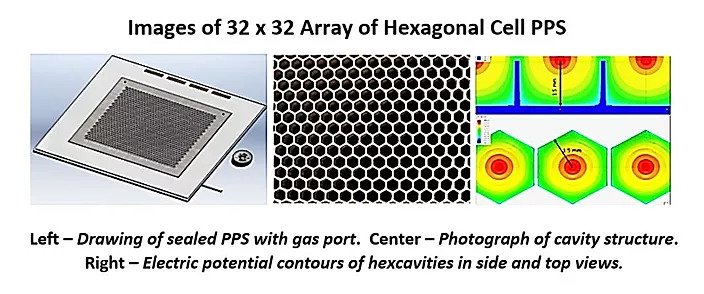Plasma Panel Sensors
Plasma Panel Sensors (PPS)
The PPS is a highly integrated array of parallel pixel-sensor-elements or cells, each independently capable of detecting free-electrons or ions generated within the cell by incident ionizing radiation. Each cell in a PPS is biased to discharge when free-electrons are generated in the gas. This discharge is accomplished by way of an electron avalanche that can either be read out directly or can lead to breakdown, creating a plasma discharge in the cell. The signal pulse is independent of the number of initiating free-electrons, rendering the PPS as intrinsically digital. For most applications, the avalanche mode is preferred as it can operate at much higher rates, is more stable, and is more radiation damage resistance; however, its readout electronics require amplification.
The PPS draws heavily on the established principles of plasma display panels (PDP), such as those used in plasma-TV sets. A PDP-TV is composed of millions of tiny cells fabricated between two glass substrates, each such cell capable of generating a localized plasma discharge. With more than 45 years of development history, the PDP industry has developed a variety of technical solutions to many of the problems plaguing other gaseous detector technologies. So although the PPS is an entirely novel technology, it enjoys a close relationship to a thoroughly mature and established industry that can sell meter size and larger diagonal devices with electronics at a price of about $0.02/cm2.

We show in the moving beam image below, a record of the electrode signals (channels) collected off an “open-cell” PPS panel from a collimated beta-source (Ru-106) being translated in 0.1 mm increments across an 11-12 mm panel surface. The panel electrode pitch is 1.0 mm. The measured beam width in the panel was 3.05 ± 0.12 mm (FWHM), with the beam position (spatial resolution) measured to an accuracy of <1.0 mm.